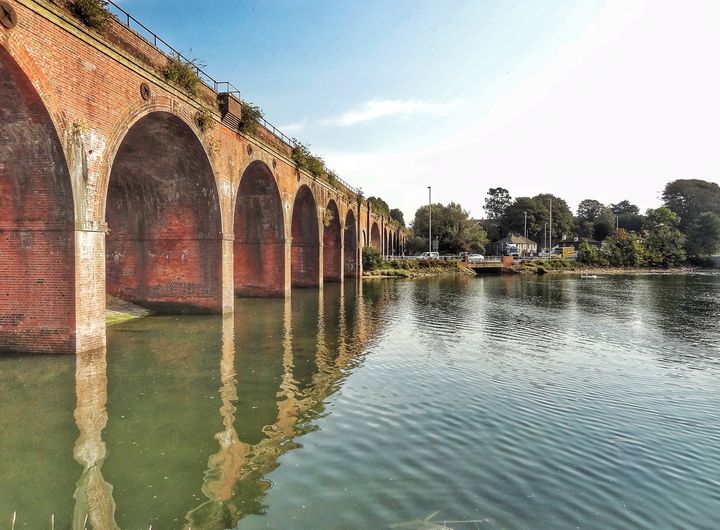In 2020 I did an Anti-Guru vlog which you can see here:
Within the vlog I raised the simple premise, that was nutrient neutrality was going to spread and there was very little to stop Natural England rolling this out. In March 2022 another 42 authority areas were added to the list making the total 72.
In the words of the Planners at Darlington Council this caused the following reaction:
On 17th and 18th Feb (last Thursday and Friday) we received emails from Natural England and the Chief Planner from the Department for Levelling Up, Housing and Communities that the Borough of Darlington is now part of the Teesmouth & Cleveland Coast Special Protection Area/Ramsar which, from the information that we have received from them so far, means that the local planning authority, under the Habitats Regulations, has to carefully consider the nutrients impacts of any projects (including new development proposals) on habitats sites and whether those impacts may have an adverse effect on the integrity of a habitats site that requires mitigation, including through nutrient neutrality. This impacts on all planning applications which cover all types of overnight accommodation including new homes, student accommodation, care homes, tourism attractions and tourist accommodation and permitted development (which gives rise to new overnight accommodation) under the Town and Country Planning (General Permitted Development) (England) Order 20159. This advice also applies to planning applications at the reserved matters approval stage of the planning application process, and to applications for grants of prior approval and/or certificates of lawfulness for a proposed use or operation. This impacts on developments for one dwelling upwards. You will appreciate that this appears to be a very complex issue that has just been brought to our attention, along with the other affected local planning authorities and it is outside of our control, impacting on a large number of existing planning applications that we currently have with us. We have been advised to attend a number of workshops over the coming weeks presented by PAS and Natural England, with the first ones being open to Chief Planning Officers this week, which we will need to accept in order to understand what this new guidance and advice entails for both ourselves, developers and planning applications. Until we have a greater understanding of this new guidance, the mechanisms for implementing them across the Tees Valley authorities, we are currently not able to progress any planning applications for residential development/accommodation in any form. This has impacted upon over twenty of my current planning applications.
Andrew Harker
Planning Officer, Development Management
So what is happening?
Nutrient pollution is a big environmental issue for many of our most important places for nature in England. In freshwater habitats and estuaries, increased levels of nutrients (especially nitrogen and phosphorus) can speed up the growth of certain plants, impacting wildlife. This is called ‘eutrophication’ and it is damaging protected sites. As such, some sites are classified as being in ‘unfavourable condition’.
The sources of nutrients generally include sewage treatment works, septic tanks, livestock, arable farming and industrial processes. Where sites are already in unfavourable (poor) condition, extra wastewater from new housing developments can make matters worse.
By designing development alongside suitable mitigation measures, that additional damage can often be avoided. This approach is called ‘nutrient neutrality’. It essentially allows developments to be permitted without impacting on the condition of the important wildlife / protected sites.
What type of development needs to be nutrient neutral?
Nutrient neutrality is needed for overnight accommodation including new homes, student accommodation, care homes, tourism attractions and accommodation. The nutrient neutrality approach applies to proposals for a net increase in dwellings. Replacement dwellings are generally excluded.
So, campsites, glamping pods / holiday lets / shepherd’s huts etc are all included. This includes developments that propose to connect to the mains, off grid treatment works or composting toilets.
Other commercial development (not involving overnight accommodation) is generally not included, so nutrient neutrality does not apply to new schools, shops, offices etc.
Other applications will be considered on their individual merits, for example new industry, extensions to regional airports etc.
Does nutrient neutrality apply to the whole authority area?
It depends on the river catchment and the catchment boundaries for wastewater treatment works. The nutrient neutrality approach applies where the treated wastewater discharges into a sensitive catchment – either into the ground or surface water.
Check to see the extent of the sensitive river catchment and how much of the authority area is within this area, eg which towns, villages, ward boundaries.
The catchments for the wastewater treatment works also need checking. The catchment calculators include a list of the relevant wastewater treatment works (on the lookups tab). The river catchment and wastewater treatment work catchments can be different. Sometimes the waste from a development in one catchment is discharged into another catchment where nutrient neutrality applies. This is more likely to be the case when your development is located near the edge of the river catchment.
What legislation covers nutrient neutrality?
Many of our most internationally important water dependent places (lakes, rivers, estuaries, etc) are protected under the Conservation of Habitats and Species Regulations 2017 (as amended).
In accordance with this legislation, a Habitats Regulations Assessment (HRA) is needed for plans and projects that are likely to have a significant effect on the protected sites.
Natural England has included more information in their updated methodology.
In the short term….
Some councils will receive the advice from Natural England out of the blue, and it can be difficult to know what to do next. In the short term Council’s will put all applications on pause until they sort out their package of nutrient neutral measures.
Given that Natural England’s advice is being upheld by Inspectors and the High Court there is no mechanism available to prevent further spread of the issue beyond the 72 authorities already effected.


